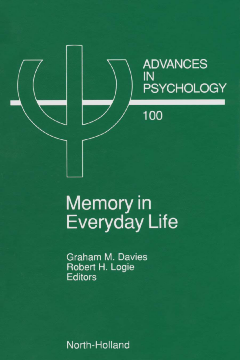
Additional Information
Book Details
Abstract
The last decade has seen a major growth in research on how memory is used in everyday life. This volume represents a reaction to traditional laboratory-bound studies of the first half of the century which sought to identify the fundamental principles of learning and memory through the use of materials and methods totally divorced from the real world. The new wave of memory research has had considerable success in charting how memory develops, the role it plays in educational and social skills and the impact of memory impairment on mental life. The current volume consists of authoritative reviews of this emerging area linked to comment and criticism from major researchers in the field.
Contrasted, probably for the first time, are two major styles of research in applied memory research: The naturalistic approach, which has sought to study memory in everyday environments, using actual experiences from people's lives as the raw data from which to derive more general principles, and the applied cognitive approach, whereby theories and methods are developed using orthodox laboratory techniques which are then validated by applying them directly to real phenomena. This is one of the few books to bring together evidence across the very wide spectrum of humdrum activity that constitutes the everyday uses of memory.
